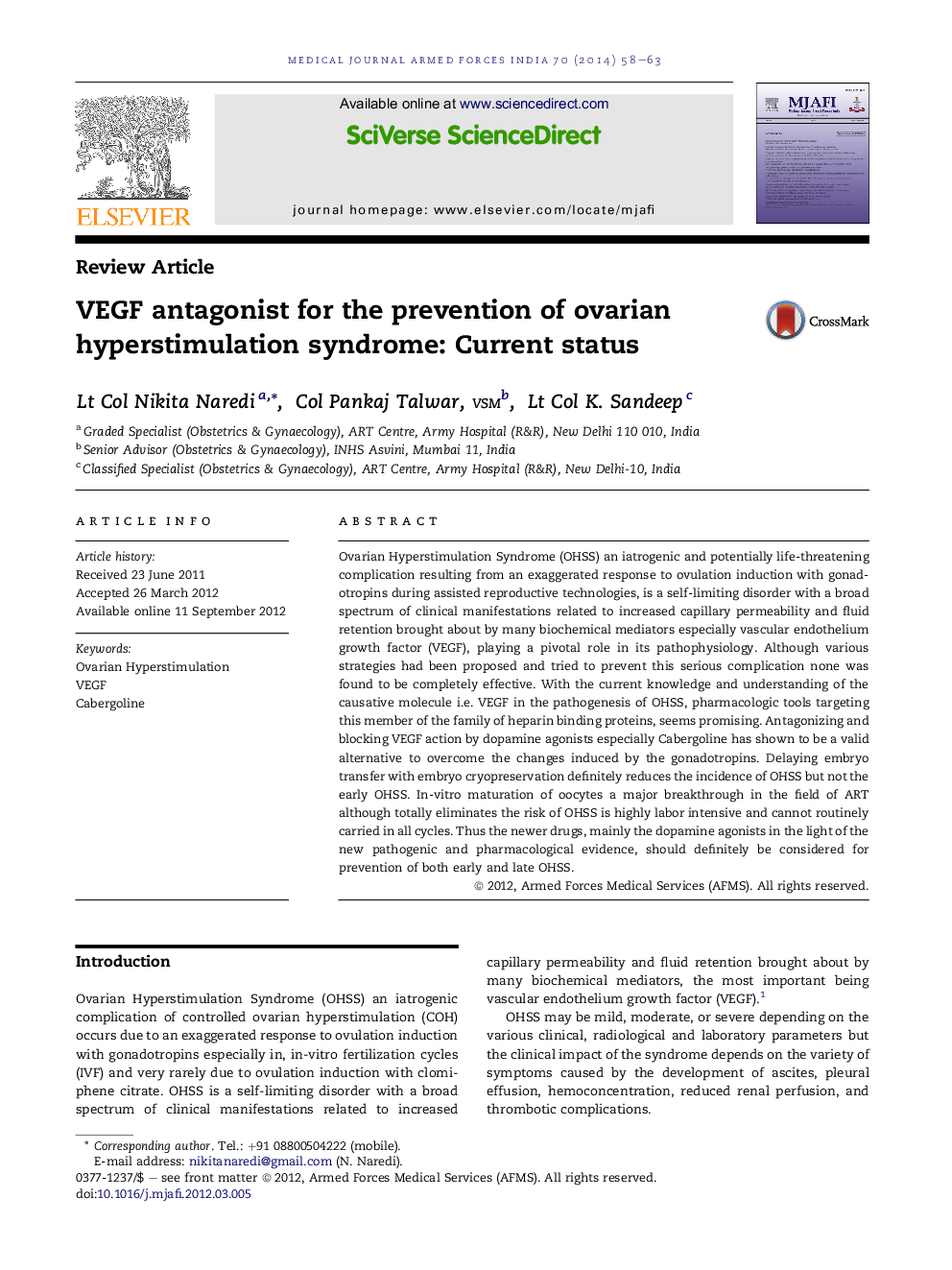| Article ID | Journal | Published Year | Pages | File Type |
|---|---|---|---|---|
| 3161284 | Medical Journal Armed Forces India | 2014 | 6 Pages |
Ovarian Hyperstimulation Syndrome (OHSS) an iatrogenic and potentially life-threatening complication resulting from an exaggerated response to ovulation induction with gonadotropins during assisted reproductive technologies, is a self-limiting disorder with a broad spectrum of clinical manifestations related to increased capillary permeability and fluid retention brought about by many biochemical mediators especially vascular endothelium growth factor (VEGF), playing a pivotal role in its pathophysiology. Although various strategies had been proposed and tried to prevent this serious complication none was found to be completely effective. With the current knowledge and understanding of the causative molecule i.e. VEGF in the pathogenesis of OHSS, pharmacologic tools targeting this member of the family of heparin binding proteins, seems promising. Antagonizing and blocking VEGF action by dopamine agonists especially Cabergoline has shown to be a valid alternative to overcome the changes induced by the gonadotropins. Delaying embryo transfer with embryo cryopreservation definitely reduces the incidence of OHSS but not the early OHSS. In-vitro maturation of oocytes a major breakthrough in the field of ART although totally eliminates the risk of OHSS is highly labor intensive and cannot routinely carried in all cycles. Thus the newer drugs, mainly the dopamine agonists in the light of the new pathogenic and pharmacological evidence, should definitely be considered for prevention of both early and late OHSS.
